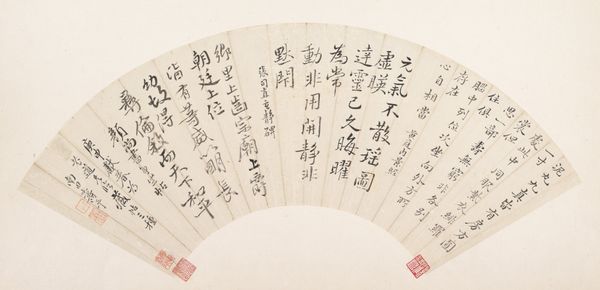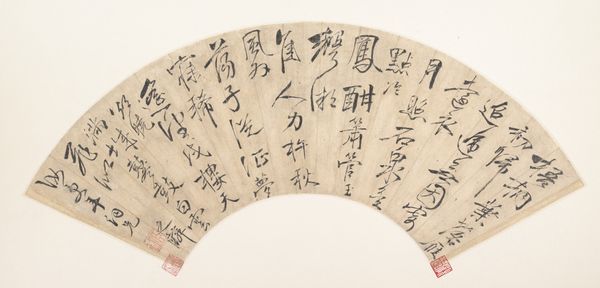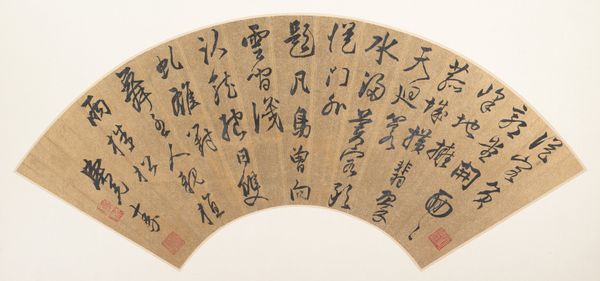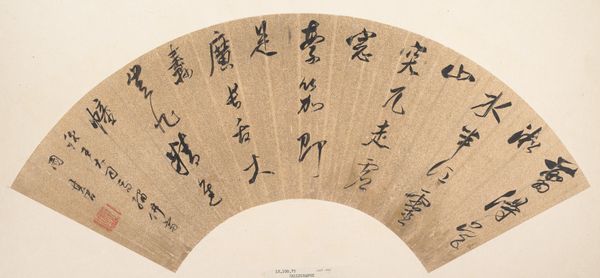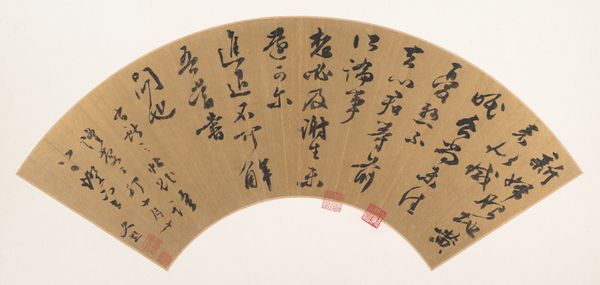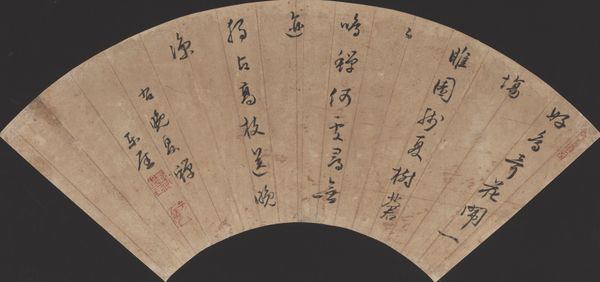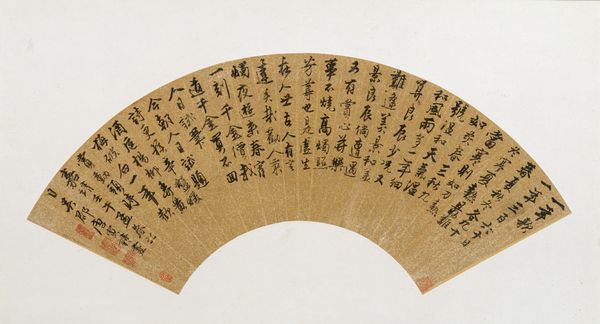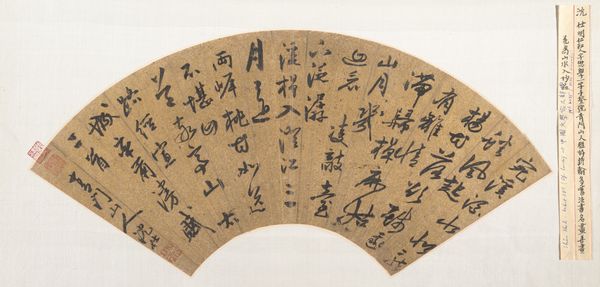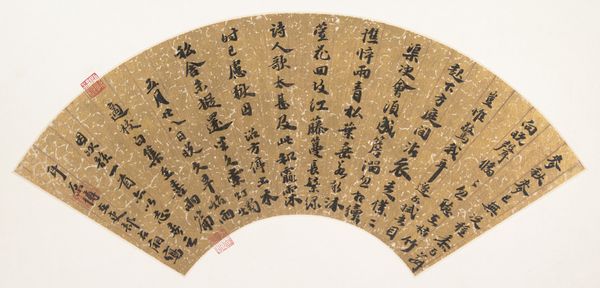
drawing, paper, ink
#
drawing
#
asian-art
#
paper
#
ink
#
china
#
calligraphy
Dimensions: 6 3/8 x 19 1/4 in. (16.2 x 48.9 cm)
Copyright: Public Domain
Editor: Wang Shihong's "Five Poems," created between 1658 and 1723, immediately strikes me with its delicate form and elegant calligraphy. I’m captivated by the balance of empty space and dense text. What do you see in this piece? Curator: What intrigues me is the interplay of line and form, the push and pull between legibility and pure abstraction. Observe how the individual characters, rendered in ink on paper, create a rhythmic pattern across the fan's surface. Editor: Yes, I noticed that too. It’s almost like a musical score; do you think the style relates to an established school? Curator: One could analyze the brushstrokes—their weight, speed, and direction—to decode the calligrapher's skill and training. Consider, also, the composition of the work, in terms of positive and negative space. Note the precise, almost geometric construction of some characters. The varying texture, density, the deliberate variation to offer depth to the flat plane. The paper becomes sculptural. What might the relation of shape to semantics suggest to you? Editor: Perhaps, but for me, there's more to it than shapes. Looking again, it seems almost more of an abstract drawing with textures created by line and brush pressure, a study in forms, instead of clear semantics. Curator: Interesting observation, and it calls into question the perceived transparency between language and signification in visual art. And it brings me back to structure of a work of art and to my intial impression: how the visual structure is compelling in this Chinese work. Thank you. Editor: Thank you for broadening my perspective. I see how focusing on form allows us to see new elements.
Comments
No comments
Be the first to comment and join the conversation on the ultimate creative platform.
